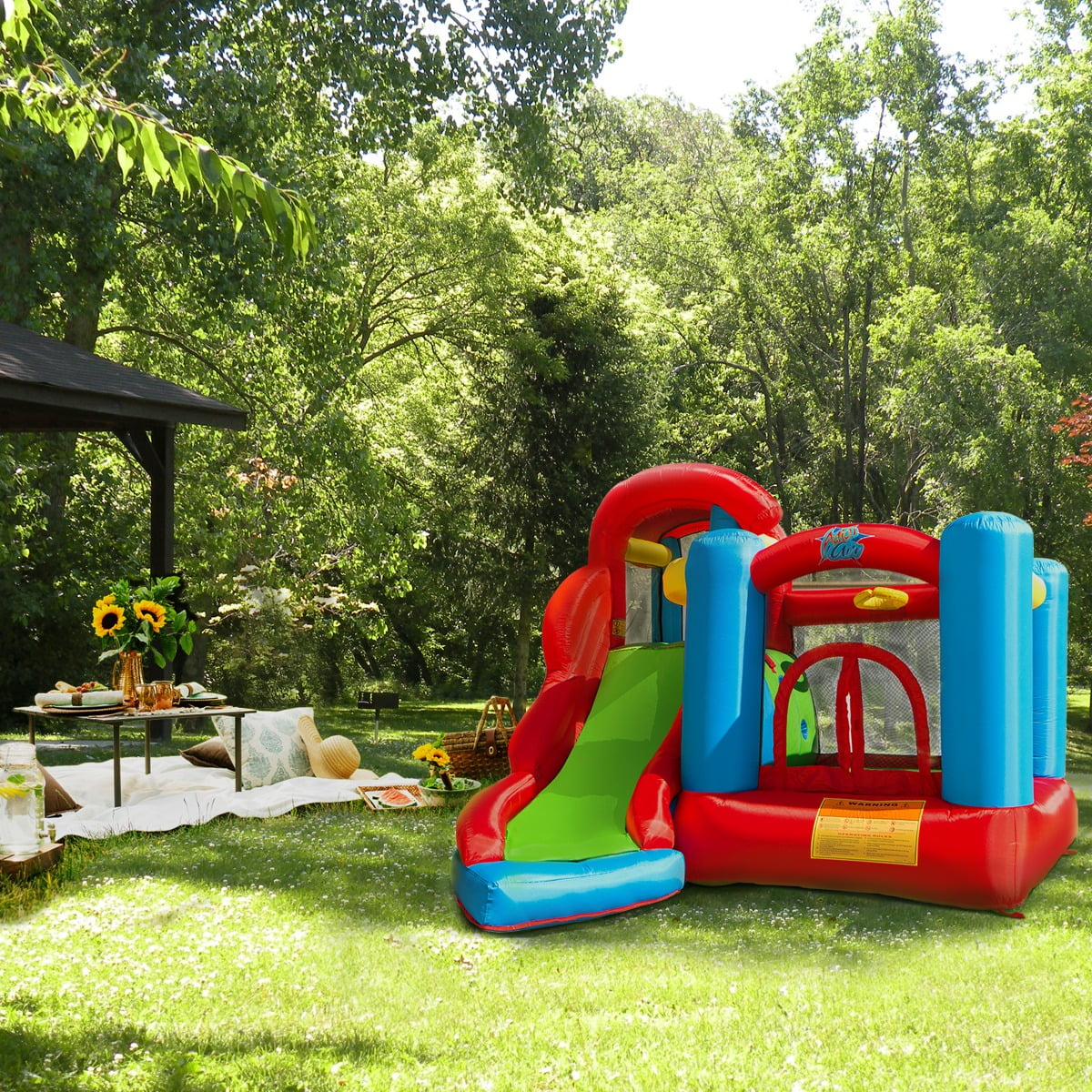I. Introduction

A. The popularity and appeal of inflatable houses Inflatable houses, also known as bounce houses or inflatable castles, have become increasingly popular attractions for parties, events, and recreational activities. Their vibrant colors, fun designs, and bouncing capabilities offer a unique and exhilarating play experience for both children and adults.
B. The importance of safety in maximizing enjoyment While inflatable houses provide hours of entertainment and joy, it is of utmost importance to prioritize safety to ensure a positive and secure play environment. By implementing proper setup and maintenance practices, individuals can enhance both the enjoyment and safety aspects of inflatable house experiences.
II. Setting Up and Maintaining Inflatable Houses
A. Proper Installation for a Secure Structure
- Site selection and preparation Choose a suitable location for the inflatable house, considering factors such as a level surface, clear of sharp objects, adequate clearance from structures, and sufficient space for anchoring and safe play.
- Anchoring the inflatable house correctly Use appropriate anchoring methods, such as stakes or sandbags, to secure the inflatable house to the ground. Ensure all anchor points are properly attached, distributing the tension evenly to maintain stability during use.
B. Regular Maintenance and Inspection
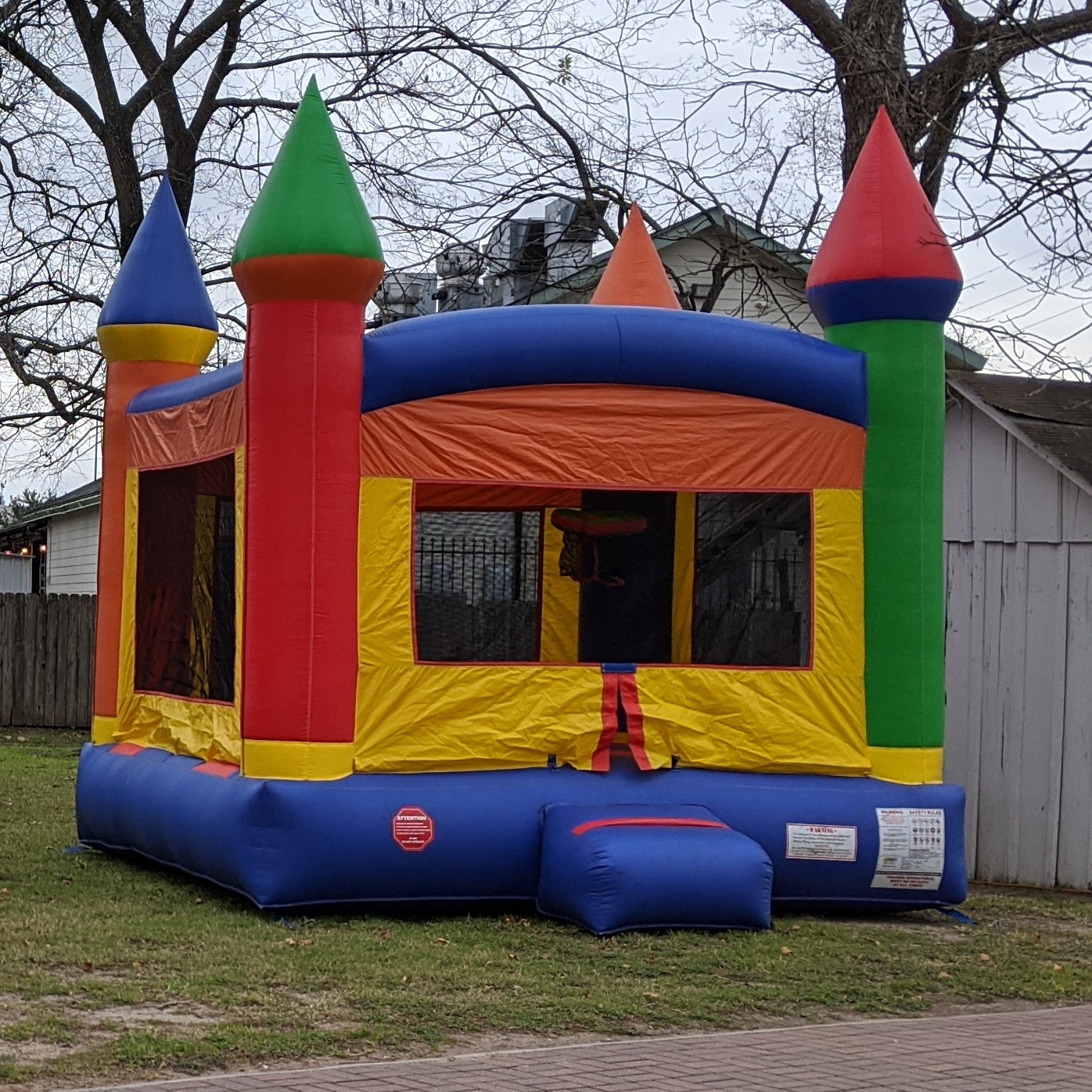
- Cleaning and sanitizing the inflatable house Regularly clean and sanitize the inflatable house using mild soap and water. Pay close attention to high contact areas such as entrance ramps, handrails, and bounce surfaces. Thoroughly dry the inflatable house before storage to prevent mold and mildew.
- Repairing damages and addressing wear and tear Promptly attend to any damages or malfunctions in the inflatable house. This includes addressing tears, holes, or loose seams using manufacturer-approved patches and adhesive materials. Replace or repair any worn-out components, such as damaged anchor points or safety nets.
- Performing thorough inspections before and after each use Conduct detailed pre-use inspections to identify any potential hazards or signs of damage. This includes checking seams, stitching, and inflatable components for integrity. Additionally, inspect the blower and electrical connections to ensure proper functioning.
Regular post-use inspections are equally essential, allowing for timely repairs and maintenance. Implementing thorough inspections and maintenance routines contributes to the longevity of the inflatable house and ensures the safety of all users.
III. Ensuring a Safe Play Environment
A. Adult Supervision and Responsible Play
The role of supervising adults
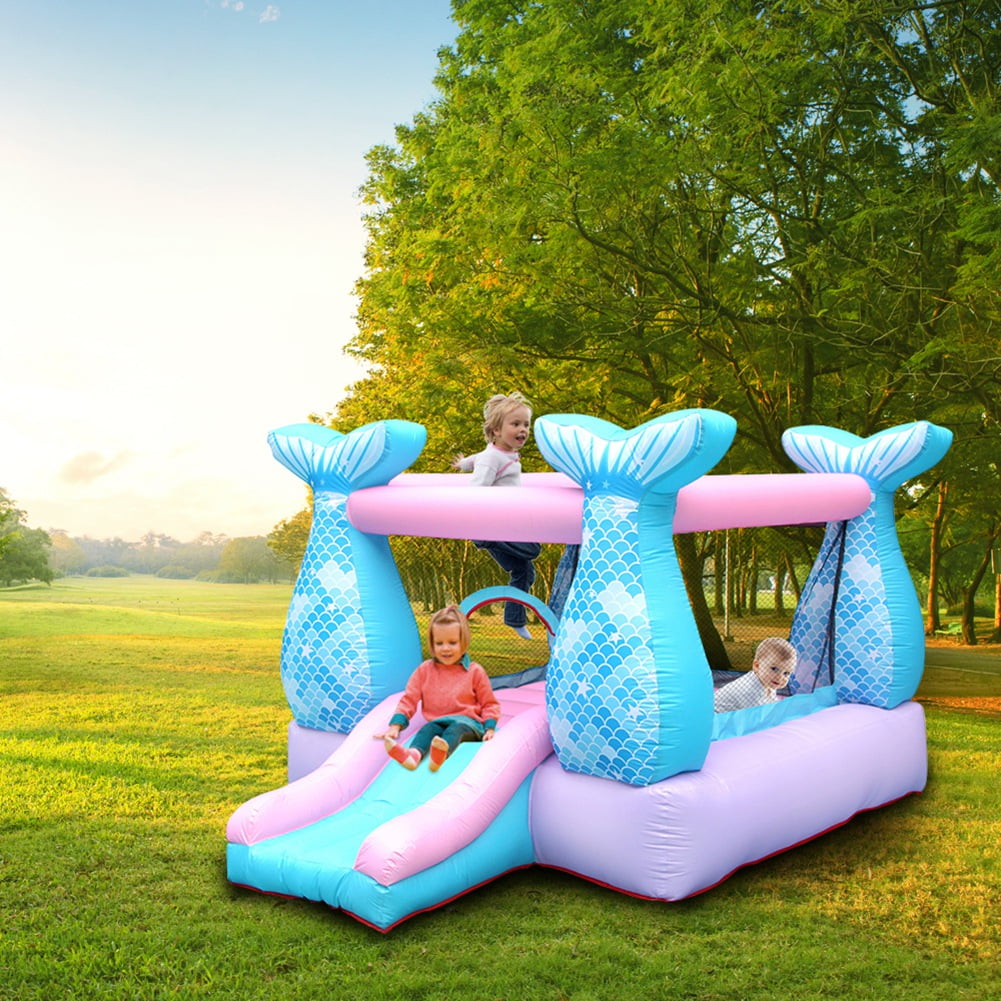
- Importance of adult supervision: Adults have a crucial role in providing oversight and ensuring the safety of children in inflatable houses. They should always be present to closely monitor the play activity and intervene if necessary.
- Assigning responsible adults: Designate responsible adults who are attentive, aware of safety guidelines, and capable of effectively managing potential risks. Rotate supervision duties to ensure consistent oversight.
Promoting age-appropriate play
- Following manufacturer guidelines: Adhere to the specific age recommendations provided by the manufacturer for each inflatable house. These guidelines consider the size, weight capacity, and complexity of the play structure.
- Grouping by age: Separate play sessions based on age groups to ensure that children of similar abilities and developmental stages are playing together. This promotes safety and prevents older and more energetic children from accidentally injuring younger or more fragile participants.
B. Setting Boundaries and Safety Rules
Defining play areas and access limitations
- Clearly mark the boundaries: Use visible barriers or tape to clearly define the play area within the inflatable house. This helps children understand where they should play and prevents them from accidentally entering restricted areas.
- Restricting access to certain areas: Identify areas that are off-limits due to particular features (e.g., water slides or climbing walls) or designated for specific age groups. Establish and enforce rules regarding these areas to prevent accidents.
Communicating and enforcing safety rules
- Establishing clear rules: Provide children with simple and age-appropriate safety rules and guidelines before entering the inflatable house. Reinforce the importance of following these rules and the consequences of not doing so.
- Enforcing rules consistently: Consistently remind children of the safety rules and intervene promptly if any rule violations or unsafe behavior occur. This maintains a safe play environment and encourages responsible play.
C. Preventing Hazards and Accidents
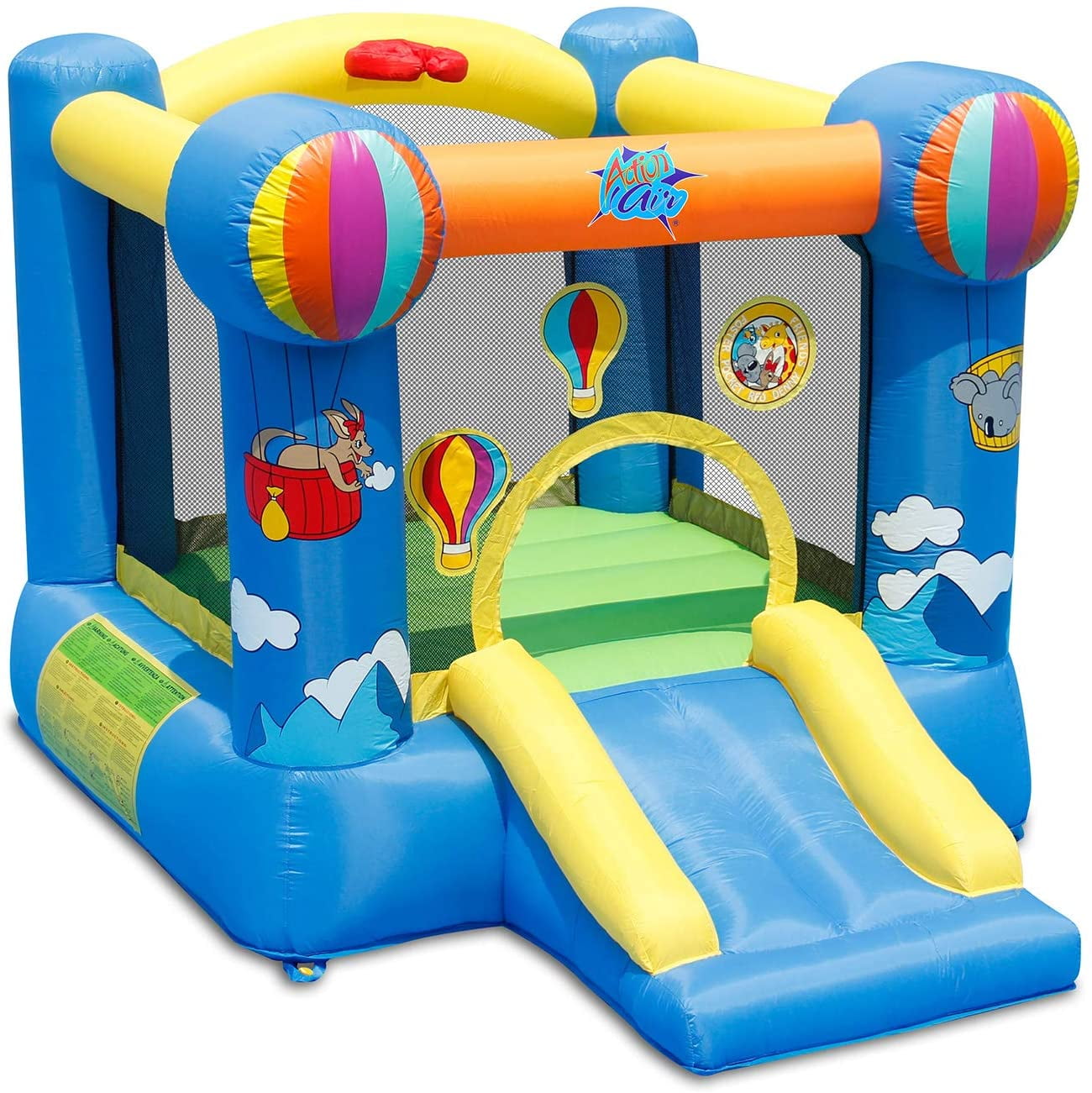
Removing shoes, loose items, and sharp objects
- No shoes policy: Instruct everyone, children and adults alike, to remove their shoes before entering the inflatable house. This prevents damage to the structure and reduces the likelihood of injuries caused by stepping on sharp objects or puncturing the inflatable material.
- Restricting loose items: Prohibit participants from bringing loose items such as jewelry, eyeglasses, or hats into the inflatable house. These items can pose safety hazards or cause damage.
- Checking for sharp objects: Regularly inspect the inflatable house and the play area to ensure there are no sharp objects or debris that could potentially cause injury or puncture the material.
Preventing overcrowding and rough play
- Monitoring participant numbers: Limit the number of participants to prevent overcrowding, which can increase the risk of collisions and accidents. Follow the manufacturer’s recommended capacity guidelines for each specific inflatable house.
- Discouraging rough play: Promote gentle and cooperative play within the inflatable house, discouraging roughhousing, pushing, or potentially dangerous actions like climbing on walls or jumping off higher platforms.
Monitoring weather conditions and avoiding extreme weather
- Wind safety precautions: Avoid using inflatable houses in strong winds or high gusty conditions, as these can cause instability or even lead to the structure toppling over. Follow weather guidelines provided by the manufacturer.
- Heat and temperature considerations: Be mindful of extreme heat conditions that could make the inflatable house surfaces uncomfortably hot for participants. Take precautions by providing shade or using water features to keep the temperature moderate.
IV. Education and Communication
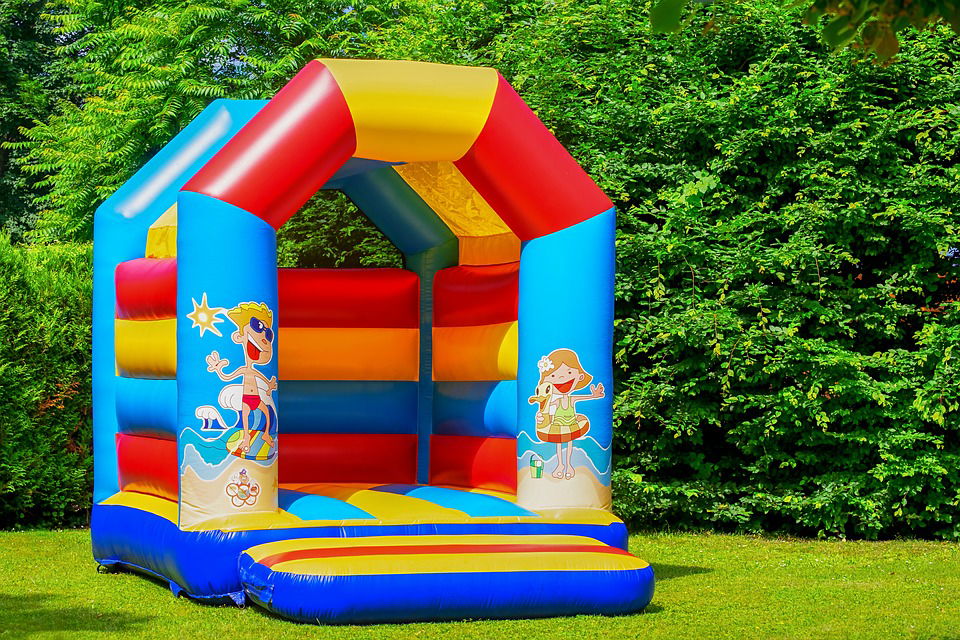
A. Teaching Children About Inflatable House Safety
Explaining safe entry and exit procedures
- Demonstrating proper entry and exit: Show children how to safely enter and exit the inflatable house one at a time, using designated entry and exit points. Emphasize the importance of waiting for their turn and maintaining balance.
- Educating on safe behavior inside the inflatable house: Guide children on appropriate behaviors such as sliding feet first, avoiding jumping off higher platforms, and respecting the personal space of others while ensuring a fun and safe play experience.
Encouraging responsible behavior within the inflatable house
- Promoting self-awareness: Encourage children to be aware of their own abilities and limitations, considering their comfort level when engaging in various activities within the inflatable house.
- Fostering empathy and consideration: Teach children to be mindful of others while playing in the inflatable house, promoting kindness, and avoiding actions that may potentially harm others.
B. Informing Users and Participants
Providing clear instructions and guidelines
- Visible signage: Display visible signs with clear instructions and safety guidelines near the entrance of the inflatable house. These signs can remind participants of the rules, restrictions, and general safety precautions.
- Written instructions and guidelines: Provide written instructions to rental companies, schools, or parents using the inflatable house to ensure proper installation, maintenance, and usage. These instructions should cover rules, setup guidelines, and any special safety considerations.
V. Conclusion
In conclusion, ensuring a safe play environment in inflatable houses is crucial for children’s well-being and enjoyment. Adult supervision, responsible play, and age-appropriate activities play essential roles in creating a secure and enjoyable experience. Clear boundaries, safety rules, and effective communication further enhance safety measures. By removing hazards and promoting safe behavior, adults can help prevent accidents and maximize the fun factor. Through education, communication, and the implementation of safety measures, inflatable houses can provide a safe, exciting, and memorable playtime for children. Let us prioritize safety to create an environment where children can explore, imagine, and have a blast in inflatable houses.
